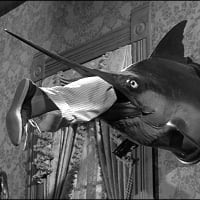In order to participate in the GunBroker Member forums, you must be logged in with your GunBroker.com account. Click the sign-in button at the top right of the forums page to get connected.
Options
Shotgun Brass
 gesshots
Member Posts: 15,679 ✭✭✭✭
gesshots
Member Posts: 15,679 ✭✭✭✭
I just traded for an exposed hammer double shotgun [modern 12ga.].
It came with about 100 all brass hulls that I don't know what to with.
Can they be reloaded like plastic hulls or do they require a whole
new technique & tooling?
Any info would be most appreciated.
Thank you.
It came with about 100 all brass hulls that I don't know what to with.
Can they be reloaded like plastic hulls or do they require a whole
new technique & tooling?
Any info would be most appreciated.
Thank you.
It's being willing. I found out early that most men, regardless of cause or need, aren't willing. They blink an eye or draw a breath before they pull the trigger. I won't. ~ J.B. Books


Comments
From what I know, the brass hulls were destined to be reloaded with black powder or BP substitute for realism. To do so, the reloader would need to replace the primer, measure out the powder, pour it into the hull, insert a over the powder wad and tamp in down, measure out and add the shot, and an over the shot wad and add a crimp to keep everything in. I'd be surprised if you couldn't find a recipe and the components with a little searching on GB and elsewhere. There is a roll crimper tool available 2nd hand for the MEC 600 Jr reloader that might work. Since your gun is modern, smokeless powder could also be used if you find a recipe from a trustd source.
I realized I didn't answer your question on tooling. The Mec reloaders should be able to deprime and size the hull, insert a new primer. I would use a dipper to measure the black powder. If using a BP substitute and have MEC with a lot of bushings, you might find one that will measure out the right amount of powder. You could then remove the hull, insert the over the powder wad and place it back into the MEC to compress the powder and add the shot. After this, you'd remove the hull and place an over shot wad in the hull. Like I said previously, a roll crimper for the MECs might or might not be able to crimp it. Since you only have 100, you might check into the old Lee loader (not the Load-All) in 12 Ga. If complete it should come with an adjustable combination shot and powder dipper. Still the crimp will be a problem. Hopefully someone more knowlegable than me will also respond with better suggestions.
The 20 gauge cases were from Remington. They used a large pistol primer instead of a shotshell primer. I had to make a punch to manually punch out the fired primer and I had to get a 20 gauge shellholder for my old Herters press to reprime them.
The 10 gauge cases were from Alcan. They used the old Remington G57 size primer which is no longer available. They could be deprimed and reprimed on my MEC shotshell press.
The next issue is wads. Because the case walls are thinner than paper (or plastic) you need larger diameter wads (e.g. 11 9 gauge wads for the 10 gauge shells). Sorry I got it wrong the first time. Of course you would use 11 gauge wads for loading 12 gague brass shells. Old age catching up with me I guess. A few years ago these wads were available from Precision Reloading, Inc. They may still be if you need some.
The secret to crimping is don't do it. Use a topwad. You do not have to fill the case. As long as you have an overpowder wad over the powder and a filler wad under the shot you are OK. The instructions I got with brass cases said to use waterglass to seal the topwads in place. I found that a thin bead of epoxy worked better (especially with 10 gauge magnum loads).
Another issue is resizing. I found that the cases could be reloaded a number of times without resizing but eventually it was necessary and was beyond the capability of my old MEC press. Fortunately I had a friend who had access to a machine shop and he was able to make sizing dies that I could use in my Herters press.
Hope some of this may be of some interest or help.